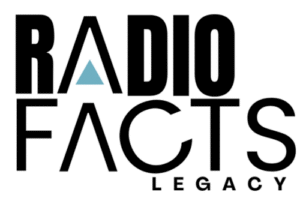
If there was ever a moment for a current or former student of Howard to yell out, “H U!” with the proper response of “You Know!” This would be that moment. Howard University soared to No. 80 on the latest U.S. News & World Report 2021 rankings list of the best national universities as evaluated on 17 measures of academic quality, including first-year student retention, graduation rates, strength of the faculty and alumni giving. The achievement marks the University’s best record to date.
We are delighted to see that our strategy to focus on student outcomes and fostering an environment that enhances the student’s ability to stay on track toward on-time graduation are being recognized through the rankings of U.S. News and World Report,” said President Wayne A. I. Frederick, M.D., MBA. “Excelling to No. 80 among national universities is an outstanding achievement for our faculty and staff who are fully committed to our students’ academic success in the classroom as well as their personal success in the workforce. We are especially thankful to our world-class faculty who prioritize the educational experience of our students on a daily basis.”
The rankings, announced today, align with the University’s Howard Forward 2024 strategic plan to enhance academic excellence through focused programs to increase retention and graduation rates. National Universities offer a full range of undergraduate majors, plus master’s and doctoral programs, and emphasize faculty research or award professional practice doctorates.
The data used in these rankings pertain to fall 2019 and earlier. Consequently, the COVID-19 pandemic could not impact the data schools submitted to U.S. News. Nonetheless, to account for the huge disruption to higher education, U.S. News re-introduced test-blind schools in the rankings and placed reduced emphasis in the rankings on admissions data and alumni giving data. U.S. News groups schools into 10 ranking categories based on their academic missions. Within each category, the sum of weighted, normalized values across 17 indicators of academic quality determine each school’s overall score and, by extension, its overall rank.
Under Dr. Frederick’s tenure as president, several new programs were implemented to increase each student’s ability to stay on track to graduation. Students are encouraged to graduate early and on time with tuition rebate programs. Additional supports include improvements in technology to enhance students’ ability to stay on track to graduation and the installation of an Office of Undergraduate Studies, primarily focused on advising, providing tutoring services and enhancing the student academic experience. These efforts, focused on academic success and the student experience, have led to increased student retention and graduation rates. In 2014 prior to Dr. Frederick’s appointment, Howard’s average first year retention rate was 82 percent; and the four-year graduation rate was 40 percent. Today, Howard’s average first year retention rate is 88 percent; and the four-year graduation rate is 52 percent. The university was ranked No. 145 in 2014 and has elevated 65 positions to achieve the No. 80 rank.
The University ranked No. 2 among Top Historically Black Colleges and Universities (HBCU). In the listing of the Best Undergraduate Business Programs, Howard jumped 12 spots to No. 116. In the listing of the Best Undergraduate Engineering Programs, Howard rose 6 spots to No. 102. Additionally, U.S News recognized Howard in other major categories, including:
Best National University: No. 80 (No. 29 among private institutions)
Social Mobility – National Universities: No. 3 among private institutions (No. 11 overall)
Undergraduate Teaching – National Universities: No. 31
Best Colleges for Veterans – National Universities: No. 50
Most Innovative Schools – National Universities: No. 58
The largest factors contributing to the institution’s improved score this year are its increase in first-year student retention rate, which is above the national average, and its increased graduation rate was 7 percent higher than the anticipated rate. Changes to the rankings methodology include the introduction of two outcome measures related to graduate indebtedness: total graduate indebtedness and the proportion with debt. Federal loans made to students who borrowed while enrolled at the institution and co-signed loans make up these figures. Howard’s graduate indebtedness proportion shows a consistent decrease in the last 5 years. Additionally, Howard continues to meet 100% of need for students who were awarded any need-based aid. Howard University is a champion for student success and exemplifies this by providing sources of funding to help students pay for their education. Howard also received an increase in its institutional reputation score among presidents, provosts and deans of admission at peer schools.
Last year, U.S. News & World Report began to factor in a school’s success at promoting “social mobility” by graduating students who received federal Pell Grants (those typically coming from households whose family incomes are less than $50,000 annually). In alignment with its mission, Howard University has a long track record of proficiently graduating Pell Eligible students, leading to this year’s No. 3 ranking among private institutions (No. 11 overall).
“An individual’s socio-economic status should not preclude talented students from obtaining a higher education,” said Frederick. “Howard University has a high population of Pell Eligible students and we are committed to helping them succeed through a variety of focused tutoring programs and grant opportunities. I applaud U.S News for developing a methodology that evaluates how institution’s support this important group of students.”
The U.S. News & World Report’s Best Colleges rankings consider the following categories: Undergraduate Academic Reputation, Student Selectivity, Faculty Resources, Graduation and Retention Rates, Financial Resources, Alumni Giving, and Graduation Rate Performance. For more information about U.S. News & World Report’s national university rankings, visit https://www.usnews.com/best-colleges/rankings/national-universities.


